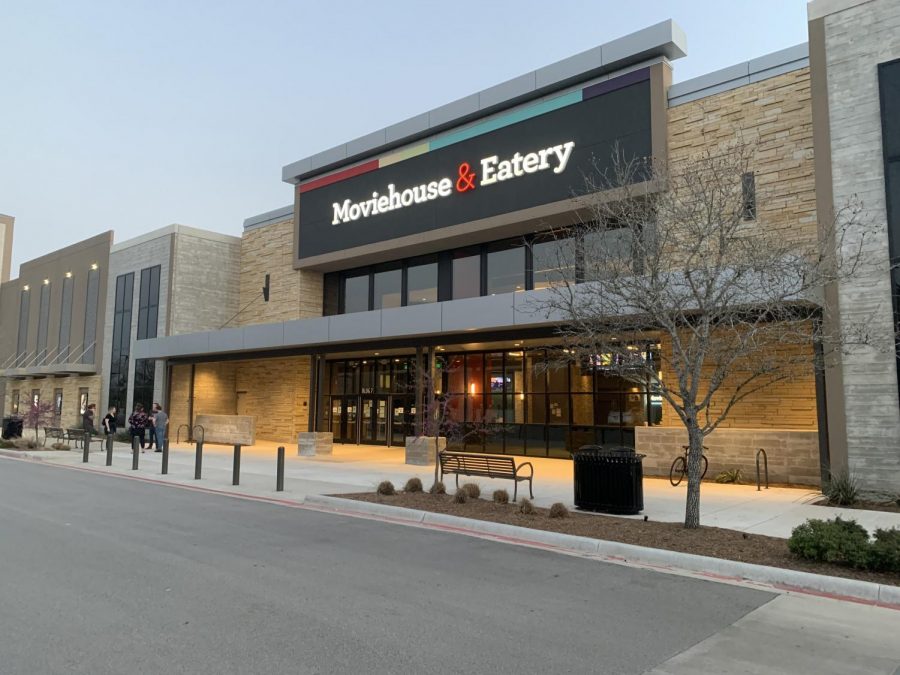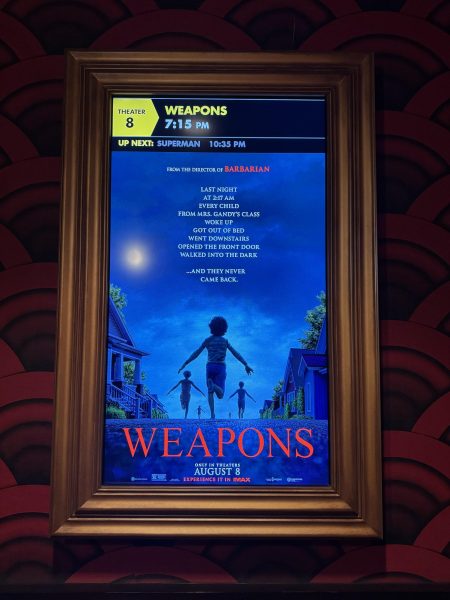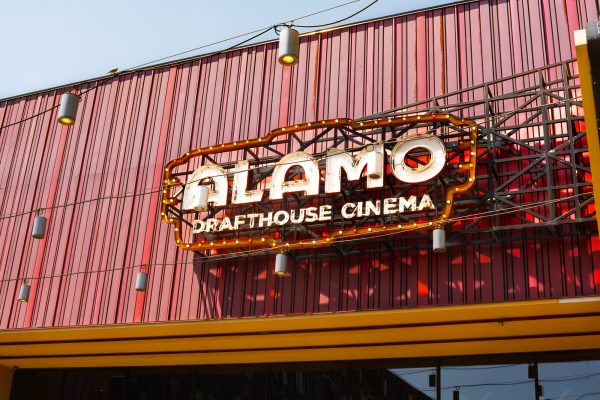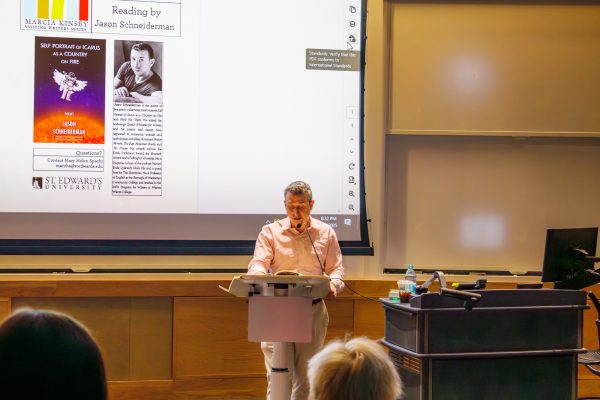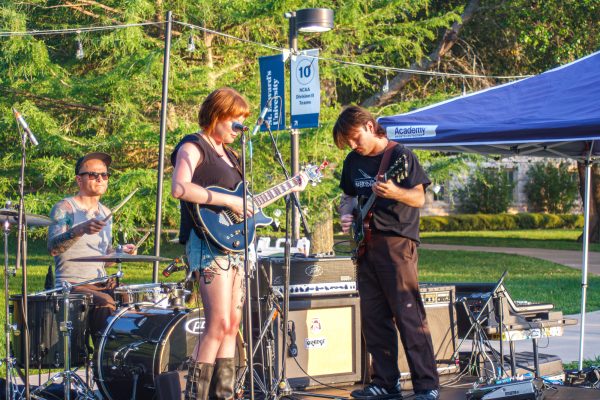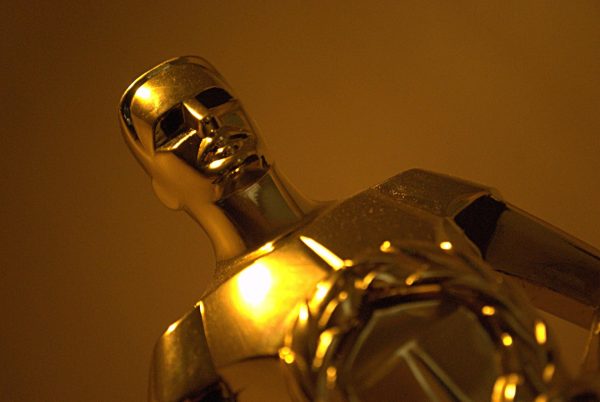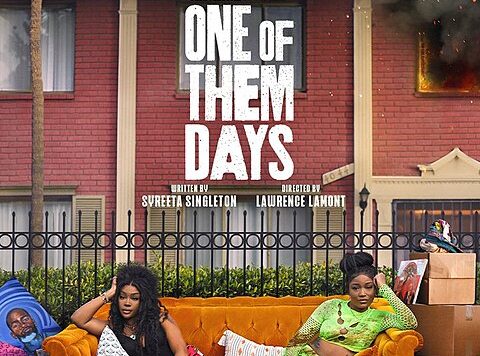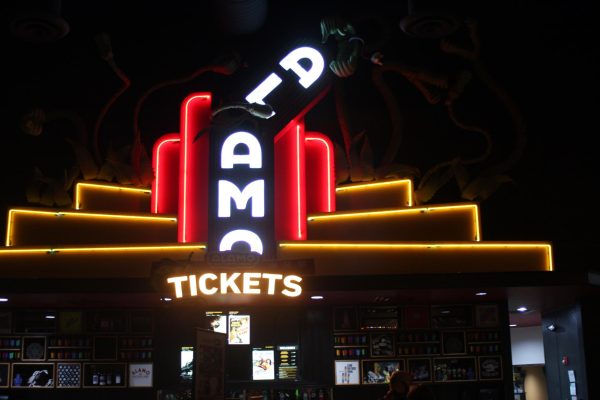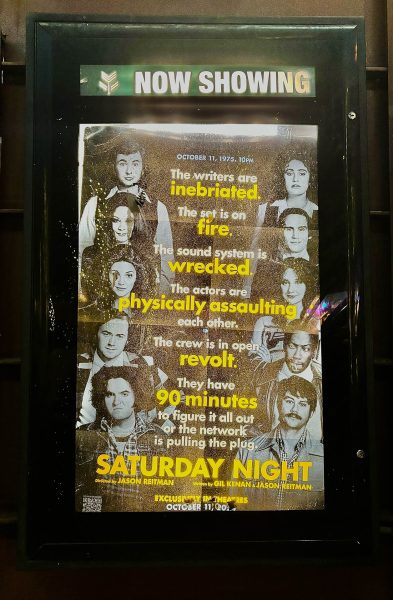Film industry adjusts to pandemic restrictions
Moviehouse & Eatery in Southwest Parkway is one of the movie theaters still standing during the pandemic while still following COVID policies. While most movie theaters are hoping for a comeback, drive-ins have found theirs.
It’s been over a year since the COVID-19 pandemic began, and out of the all of industries, including sports and music, there is no blow to the stomach that felt worse than the crash of the film industry of 2020. As someone who aspires to review films for a professional newspaper, and as a fan of movies of any genre, missing the novelty of paying for a ticket to witness the theatrical experience for any film of my choosing was probably the worst experience in the world.
After the virus started making its way into the United States and even all the way to Texas, multiple films that were set to have a 2020 release date were unfortunately delayed either later in the year, 2021 or later on in 2022. Despite finding new movie release dates in the present, way back when, films including “Fast 9,” “Wonder Woman 1984,” “A Quiet Place: Part II,” “Antlers,” and “Godzilla vs. Kong” had innumerable delays and couldn’t find the proper time to become released to movie theaters nationwide due to the overwhelming COVID-19 cases and updates occurring every other month or so.
The only thing that the film industry had to rely on in order to keep the business afloat was to temporarily release movies via video-on-demand streaming. One of the first movie production studios to release their features on your television was Universal Pictures opting to release Dreamworks’ latest sequel “Trolls: World Tour.” Even while acknowledging the film wasn’t particularly good, the animated sequel was a financial success, being rented 5 million times and grossing $100 million in sales.
This was one of the ideas that paved the way for independent studios, even multi-billion dollar companies such as Disney, and eventually Warner Bros, to aim for type of distribution that could help their studios out by releasing their feature-length flick simultaneously in theaters and only on Disney+ or AT&T-owned streaming service HBOMAX. Because of this, according to Screen Rant, the market for streaming services grew by 37% in 2020, with Disney+ gaining over 73-100 million subscribers and HBOMAX delivering films to viewers like “Judas and the Black Messiah” and Zack Snyder’s 4-hour long superhero cut of “Justice League.”
On the other hand, this was also damaging to movie theaters. Well-known directors such as Christopher Nolan, an advocate for theaters, wanted to bring people back in seats with his latest inverted time travel thriller, “Tenet.” Unfortunately, “Tenet” was a critical success, but a huge box office bomb.
As months rolled by, movie theater businesses (especially in Austin) went to shambles. According to the Austin American-Statesman, Alamo Drafthouse Ritz filed Chapter 11 bankruptcy and over 668 Regal movie theaters in the United States (four of which in Austin) and Cineworld theaters in the United Kingdom have elected to close down due to high debts and effects of the pandemic, leaving over 45,000 people without a job.
Whereas movie theaters are looking for a comeback, drive-in theaters have managed to survive during COVID-19. VOANews displays that 305 locations are providing a safe way to practice social distancing and are receiving attention that theaters like Haar’s Drive-In Movie Theater in Dillsburg, Pennsylvania haven’t witnessed for more than a decade.
COVID-19 has been the sharpest thorn in the film industry’s side in terms of distribution, delays, novelty and business while acquiring its benefits in some fields. In due time, when the virus has died down and the results have decreased, my only wish is that three of these mediums would thrive equally for those who prefer to see a film either at the comfort of their home, in the escapism of a movie theater or the nostalgia of a drive-in.


